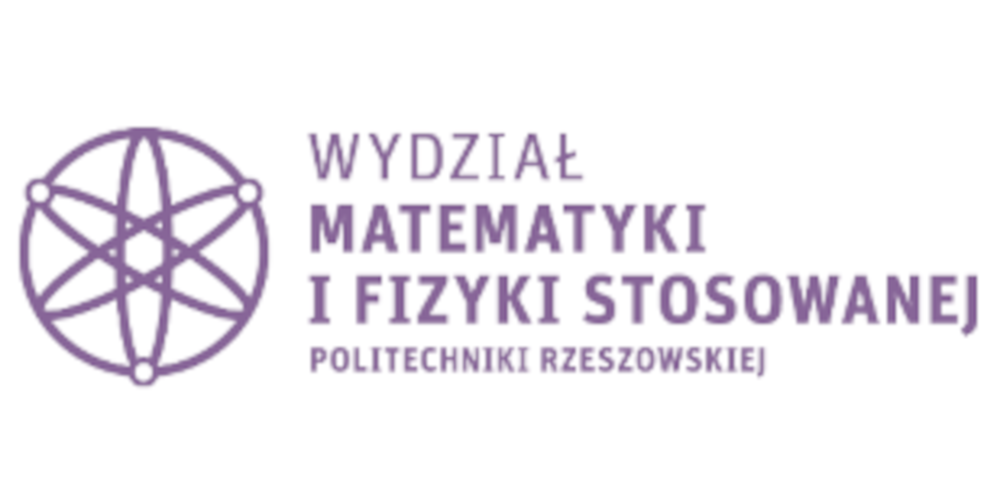

Mathematics II
Some basic information about the module
The aim of studying and bibliography
The main aim of study:
The use of mathematical methods in the description of physical phenomena, technology use mathematical methods.
The general information about the module:
Bibliography required to complete the module
| 1 | B. Gdowski, E. Pluciński | Zadania z rachunku wektorowego i geometrii analitycznej | PWN, Warszawa. | 1981 |
| 2 | Jurlewicz T., Skoczylas Z. | Algebra liniowa 1, Definicje, twierdzenia, wzory. | Oficyna Wydawnicza GiS, Wrocław. | 2008 |
| 1 | T. Jurlewicz, Z. Skoczylas | Algebra liniowa 1. Przykłady i zadania | Oficyna Wydawnicza GiS, Wrocław, . | 2008 |
| 2 | Krysicki W., Włodarski L. | Analiza matematyczna w zadaniach I | PWN. | 2004 |
| 3 | Krysicki W., Włodarski L. | Analiza matematyczna w zadaniach II | PWN. | 2004 |
Basic requirements in category knowledge/skills/social competences
Formal requirements:
The student satisfies the formal requirements set out in the study regulations
Basic requirements in category knowledge:
Knowledge of mathematics that allows to understand the mathematical concepts taught.
Basic requirements in category skills:
Skills to solve math problems at the basic level in math matriculation exam.
Basic requirements in category social competences:
Module outcomes
| MEK | The student who completed the module | Types of classes / teaching methods leading to achieving a given outcome of teaching | Methods of verifying every mentioned outcome of teaching | Relationships with KEK | Relationships with PRK |
|---|---|---|---|---|---|
| MEK01 | can perform mathematical operations in a set of complex numbers, can set roots of complex polynomials | lectures, classes | test, written examination |
K-W01++ K-U03+ |
P6S-UO P6S-UW P6S-WG P6S-WK |
| MEK02 | can do mathematical operations with matrices, calculate determinants and ranks of matrices, can solve systems of linear equations | lectures, classes | test, written examinationon |
K-W01+++ K-U03+++ |
P6S-UO P6S-UW P6S-WG P6S-WK |
| MEK03 | can do operations on vectors, can solve problems concerns relative positions of lines and planes in space | lectures, classes | test, written examination |
K-W01+ K-K01++ |
P6S-KO P6S-UU P6S-WG P6S-WK |
| MEK04 | can solve elementary first order ordinary differential equations | lectures, classes | test, written examination |
K-W01+++ K-U09++ K-K01++ |
P6S-KO P6S-UO P6S-UU P6S-WG P6S-WK |
The syllabus of the module
| Sem. | TK | The content | realized in | MEK |
|---|---|---|---|---|
| 2 | TK01 | W01, W02, W03, C01, C02, C03, C04 | MEK01 | |
| 2 | TK02 | W06, W07, W08, C07, C08, C09 | MEK02 | |
| 2 | TK03 | W09, W10, W11, C10, C11, C12 | MEK02 | |
| 2 | TK04 | W12, W13, W14, W15, C13, C14, C15 | MEK03 | |
| 2 | TK05 | - |
W04, W05, C05, C06 | MEK04 |
The student's effort
| The type of classes | The work before classes | The participation in classes | The work after classes |
|---|---|---|---|
| Lecture (sem. 2) | The preparation for a test:
5.00 hours/sem. |
contact hours:
30.00 hours/sem. |
Studying the recommended bibliography:
3.00 hours/sem. |
| Class (sem. 2) | The preparation for a Class:
15.00 hours/sem. The preparation for a test: 5.00 hours/sem. |
contact hours:
30.00 hours/sem. |
Finishing/Studying tasks:
10.00 hours/sem. |
| Advice (sem. 2) | |||
| Exam (sem. 2) | The preparation for an Exam:
20.00 hours/sem. |
The written exam:
2.00 hours/sem. |
The way of giving the component module grades and the final grade
| The type of classes | The way of giving the final grade |
|---|---|
| Lecture | |
| Class | |
| The final grade |
Sample problems
Required during the exam/when receiving the credit
(-)
Realized during classes/laboratories/projects
(-)
Others
(-)
Can a student use any teaching aids during the exam/when receiving the credit : no